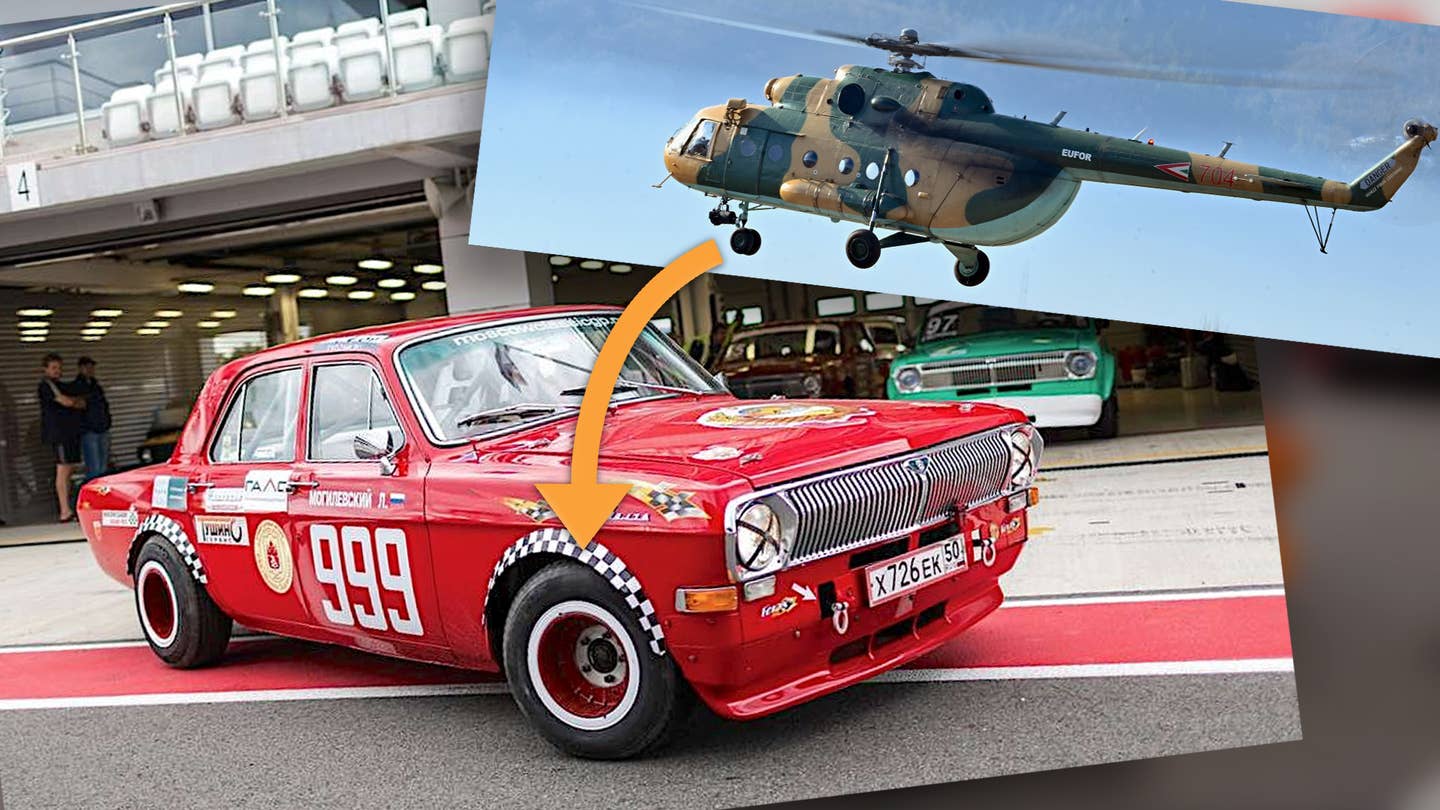Soviet Racers Couldn’t Get Alloys, So They Turned to Magnesium Helicopter Wheels
Meet the Soviet equivalent of RS Watanabes.

Even behind the Iron Curtain, Soviet citizens did what people will always do when they can line up two cars together: Race. This expensive pastime was even harder in the Union of Soviet Socialist Republics though, leaving drivers who wanted an advantage over the competition with few options. That forced racers to turn to unusual sources for things like lightweight wheels—such as helicopters and armored cars.
Motorsport was unusual but not unheard-of in the U.S.S.R., which narrowly missed participating in Group B. Despite common shortages impacting the availability of car parts, including basic wear items, there was some semblance of grassroots rally and touring car racing. Naturally, drivers looked for competitive edges by upgrading their vehicles, but that was anything but easy. Performance parts were hard to come by, and lightweight wheels especially presented a challenge, as aluminum wheels were still prohibitively expensive even in the West. Racers' only options were to try to smuggle something in and modify it, or fashion their own out of domestically manufactured parts. And that's how helicopter wheels came into the equation.
According to Dzen.ru, workers at certain plants contracted to make aerospace parts or military vehicles would sometimes stay after hours to make custom lightweight racing wheels. They'd fashion them out of wheels designed for either armored cars or helicopters, with two particular wheels being standout favorites.
One was the KT 192-020, an aluminum wheel that ZR.ru says was meant for the BDRM series of armored reconnaissance vehicles. There isn't much historical documentation on this wheel or its use in racing, indicating its availability may have been limited. Again, aluminum wheels were pricey at this time, so it's not likely many fell off a truck, so to speak. Instead, the hot commodity was its airborne counterpart, the K2-116.
The K2-116 was a magnesium wheel used on a variety of aircraft, with users reportedly including the Mil Mi-4 and Mi-8 helicopters, Antonov An-28 transport plane, and Ilyushin Il-18 airliner. Its specs are preserved in a 2016 for-sale listing on Drive2.ru, which outlines it as a multi-piece 14 by 9-inch wheel weighing between 17 and 18 pounds. They were cast from ML5 magnesium alloy, and featured removable flanges and center sections, allowing easy tire changes. Or as it mattered most to Russian racers, easy modification to fit a variety of automotive bolt patterns.
According to the seller above, this was done by machining down old brake drums or rotors that fit the receiving vehicle's bolt patterns, then drilling holes to bolt the modified brake part to the rest of the wheel. This slapdash construction apparently made these wheels hard to balance, while their onerous production meant they were expensive. Still, they were strong, and significantly lighter than the steel wheels that racers would otherwise be stuck with, so they were apparently still popular despite their cost.

In fact, the K2-116 was apparently popular enough in 1970s and '80s Soviet racing that the wheel is still a fixture of Russian vintage racing today. A video from the 2016 Moscow Classic Grand Prix depicts a modified GAZ-24 Volga rolling around on these obscure icons, which seem to be held in regard similar to that which RS Watanabes are in Japan.
Getting a set for your imported Buhanka, grey-market GAZ, or Lada, however, won't be easy. I found a smattering of for-sale listings from throughout the years across the Russian internet, as well as mention of reproduction wheels being made today (though I wasn't able to find any examples). Between their rarity and Russia's post-invasion ban on exporting car parts, the odds of copping some K2-116s for yourself seem slim to none. Ukrainian aerospace supplier Vertol.com.ua seems to still offer some, though ordering them from Ukraine right now is probably a gamble. All thanks for that go to Russia—the best argument against being a Russophile.
Got a tip or question for the author? You can reach them here: james@thedrive.com
